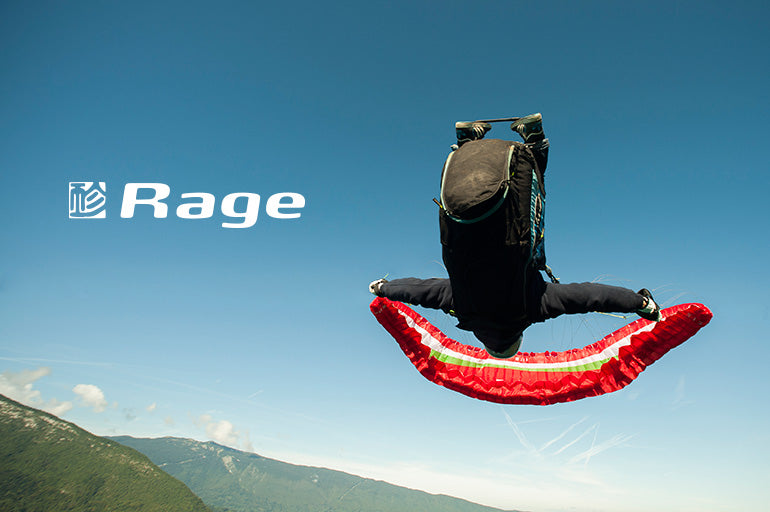POWER AND CONTROL
The Rage is designed for advanced acro pilots wishing to perform helicopters, infinity tumblings, Rhythmic and McTwists with the maximum amount of power, control and stability. The Rage gives an incomparable feeling of power through the brake handles. It reacts very precisely to brake inputs and recovers easily from stalls and spins. This improves the safety and easiness of heli-connections, giving an overall feeling of efficiency.
The Rage is the product of a long period of constant testing and development by the GIN R&D team pilots.
The first Rage prototypes in 2012 introduced for the first time the “lower sail vents”. The vents are closed when the wing is flying normally, but in a stall, the vents open to increase the internal pressure in the wing. The wing is also highly supported by Rigifoils, which enables the smooth performance of even the most radical manoeuvres. The elliptical planform aids stability during stall manoeuvres.
The Rage dominated the three Acro World Cup competitions in 2013, taking first place in the synchro category in all three competitions.
Adrian Hachen and Michael Maurer (aka “Spälti Acro Team”):
“To perform the best synchro-manoeuvres, it’s important that the wing reacts predictably. Only when the manoeuvres can be repeated the same way, can they be synchronized and formed into a show. Thanks to the dive of the wing we can perform pitch-pendulum without speed bar. And with the precise and predictable stall behaviour of the Rage, we can push the limits of Acro flying.”
The Rage is available in 2 sizes. The Rage 17 is aimed at advanced acro pilots and competitors, and the Rage 19.5 is suitable as a first acro wing or acro glider for heavier pilots.
TECHNICAL SPECIFICATIONS
| Size | 17 | 19.5 |
|---|---|---|
| Flat area (m2) | 17.0 | 19.5 |
| Flat span (m) | 9.7 | 10.4 |
| Flat aspect ratio | 5.6 | 5.6 |
| Projected area (m2) | 14.4 | 16.9 |
| Projected span (m) | 7.9 | 8.5 |
| Projected aspect ratio | 4.3 | 4.3 |
| Number of cells | 54 | 54 |
| Glider weight (kg) | 5.4 | 6.1 |
| Weight range (kg) | 70-90 | 80-100 |
| Certification | EN 926C | EN 926C |



